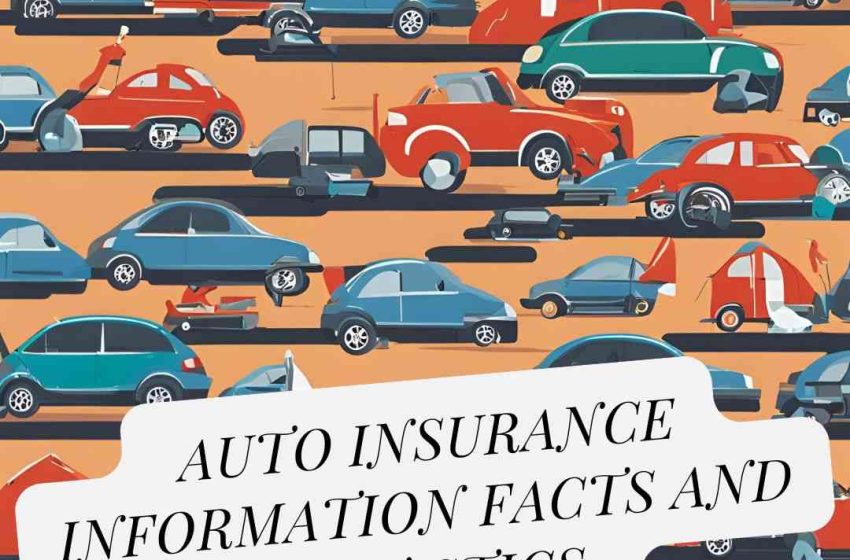
AUTO INSURANCE INFORMATION FACTS AND STATISTICS
If you own a car, auto insurance is not just an option—it is a legal necessity. And you wouldn’t want it any other way. If you are involved in an accident or have your car stolen, owning the right kind of auto insurance can help to ease a difficult situation. The information below will provide some answers and help you ask the right questions in order to find the most appropriate solutions.
Q: If I don’t have auto insurance, and am involved in an accident that is completely not my fault, will the party at fault’s insurance pay for the repairs to my car?
A: Yes, assuming that unlike you, the “party at fault” is carrying at least basic liability coverage, his or her insurance will pay for the damage incurred by their client. However, if the fault for the accident is shared, for example 50-50, then the other driver’s insurance will cover his or her portion of the damage, but will only cover your portion if the other driver is also carrying uninsured motorist insurance. However, uninsured motorist insurance is not obligatory in every state, and you should not count on it. Whatever the insurance situation of the other party, not carrying auto insurance is against the law, so you would be wise to buy it. Penalties for non-compliance with insurance laws vary by state, but often involve a substantial fine, license and/or registration suspension or revocation, as well as possible jail time in some states.
AUTO INSURANCE BASICS
BUYING A POLICY & SAVING MONEY
HELP! I HAVE TO FILE A CLAIM
What should I do if I am having trouble settling my claim?
Can my insurance company require me to use certain types of auto repair parts?
SAFETY TIPS
Avoiding Deer / Car Collisions
TOP TEN MOST EXPENSIVE AND LEAST EXPENSIVE STATES
The cost of automobile insurance varies significantly from state to state due to factors like state regulations, population density, accident rates, and the cost of repairs. Here’s a general overview of the states that are often among the most and least expensive for automobile insurance as of 2024:
Most Expensive States for Automobile Insurance:
- Michigan – Known for high insurance costs due to its unique no-fault insurance system and high medical costs.
- California – High premiums driven by high vehicle density and repair costs.
- Florida – High rates due to frequent accidents and high numbers of uninsured drivers.
- New York – Expensive due to high population density and high repair costs.
- New Jersey – High premiums related to dense traffic and a high incidence of claims.
- Louisiana – High rates due to a high number of claims and severe weather conditions.
- Nevada – Expensive due to high accident rates and a high number of uninsured drivers.
- Texas – Rising rates attributed to high vehicle theft rates and severe weather events.
- Delaware – Higher premiums driven by its high traffic and insurance claim rates.
- Connecticut – High costs linked to dense traffic and higher repair costs.
Least Expensive States for Automobile Insurance:
- Maine – Lower premiums due to low traffic density and fewer claims.
- New Hampshire – Generally lower rates because of fewer uninsured drivers and less traffic.
- Vermont – Lower costs attributed to low accident rates and a lower population density.
- Ohio – Lower premiums due to fewer accidents and lower repair costs.
- Indiana – Generally lower rates related to fewer claims and less traffic.
- Wisconsin – Lower insurance costs owing to lower accident rates and repair costs.
- Iowa – Lower premiums because of lower accident rates and lower repair costs.
- South Dakota – Lower rates due to low traffic density and fewer claims.
- Nebraska – Generally lower premiums because of fewer accidents and lower repair costs.
- North Carolina – Lower insurance costs attributed to a lower number of claims and lower repair costs.
These rankings can vary year to year and by specific insurance provider, so it’s always a good idea to compare quotes from multiple insurers in your area for the most accurate and current rates.
General Facts About Motor Insurance:
- Coverage Types:
– Liability Insurance: Covers damages to others if you’re at fault in an accident. Most states require this minimum coverage.
– Collision Insurance: Covers damages to your own vehicle from an accident.
– Comprehensive Insurance: Covers non-collision-related damages such as theft, vandalism, or natural disasters.
– Personal Injury Protection (PIP): Covers medical expenses for you and your passengers, regardless of fault.
– Uninsured/Underinsured Motorist Coverage: Provides protection if you’re in an accident with someone who has insufficient or no insurance.
- Cost Influencers:
– Location: Rates vary significantly by state and even within states based on urban vs. rural settings.
– Driving Record: Clean records typically lead to lower premiums; traffic violations and accidents increase rates.
– Vehicle Type: High-value and high-performance cars often cost more to insure due to repair costs and risk.
– Age and Gender: Younger drivers and males often face higher premiums due to statistical risk factors.
– Credit Score: In many states, a lower credit score can lead to higher insurance premiums.
- State Requirements:
– Minimum Liability Coverage: Most states require drivers to carry a minimum amount of liability insurance. The limits vary by state.
– No-Fault States: Some states have no-fault insurance systems where each driver’s insurance covers their own injuries, regardless of who caused the accident.
FACTS AND STATISTICS :
- Average Premiums:
– As of 2024, the average annual cost of auto insurance in the U.S. is approximately $1,800. This figure can vary widely based on the factors mentioned above.
- High-Risk Factors:
– Drivers with a history of speeding tickets pay on average 20% more for insurance compared to those without violations.
– A single at-fault accident can increase premiums by 30% or more.
- Claim Frequency and Cost:
– The frequency of car accidents in the U.S. is around 6 million annually.
– The average cost of a claim involving injuries is over $15,000, while property damage claims average about $3,000.
- Insurance Penetration:
– Approximately 13% of drivers in the U.S. are uninsured. This figure varies by state, with some states having uninsured rates as high as 25%.
- Technological Impact:
– The rise of telematics (usage-based insurance) is growing, with 20% of drivers participating in programs that track driving habits to potentially lower premiums.
- Consumer Behavior:
About 40% of drivers shop for insurance quotes at least once a year to find better rates.
- Fraud and Scams:
– Insurance fraud is a significant issue, with an estimated $40 billion lost annually to fraudulent claims in the U.S.
These facts and statistics provide a snapshot of the current state of motor insurance and highlight the various factors influencing insurance costs and coverage.


